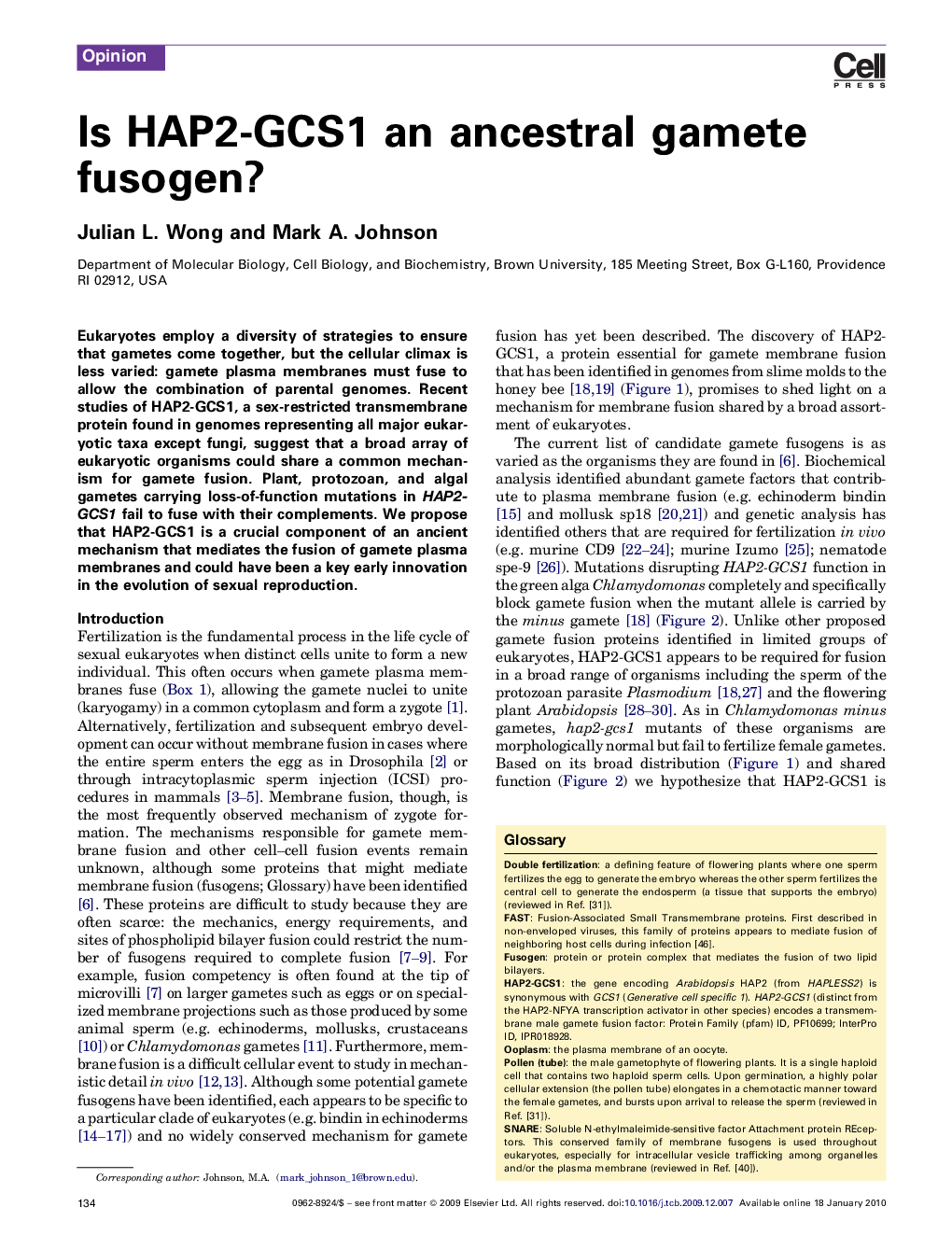| Article ID | Journal | Published Year | Pages | File Type |
|---|---|---|---|---|
| 2204916 | Trends in Cell Biology | 2010 | 8 Pages |
Eukaryotes employ a diversity of strategies to ensure that gametes come together, but the cellular climax is less varied: gamete plasma membranes must fuse to allow the combination of parental genomes. Recent studies of HAP2-GCS1, a sex-restricted transmembrane protein found in genomes representing all major eukaryotic taxa except fungi, suggest that a broad array of eukaryotic organisms could share a common mechanism for gamete fusion. Plant, protozoan, and algal gametes carrying loss-of-function mutations in HAP2-GCS1 fail to fuse with their complements. We propose that HAP2-GCS1 is a crucial component of an ancient mechanism that mediates the fusion of gamete plasma membranes and could have been a key early innovation in the evolution of sexual reproduction.
